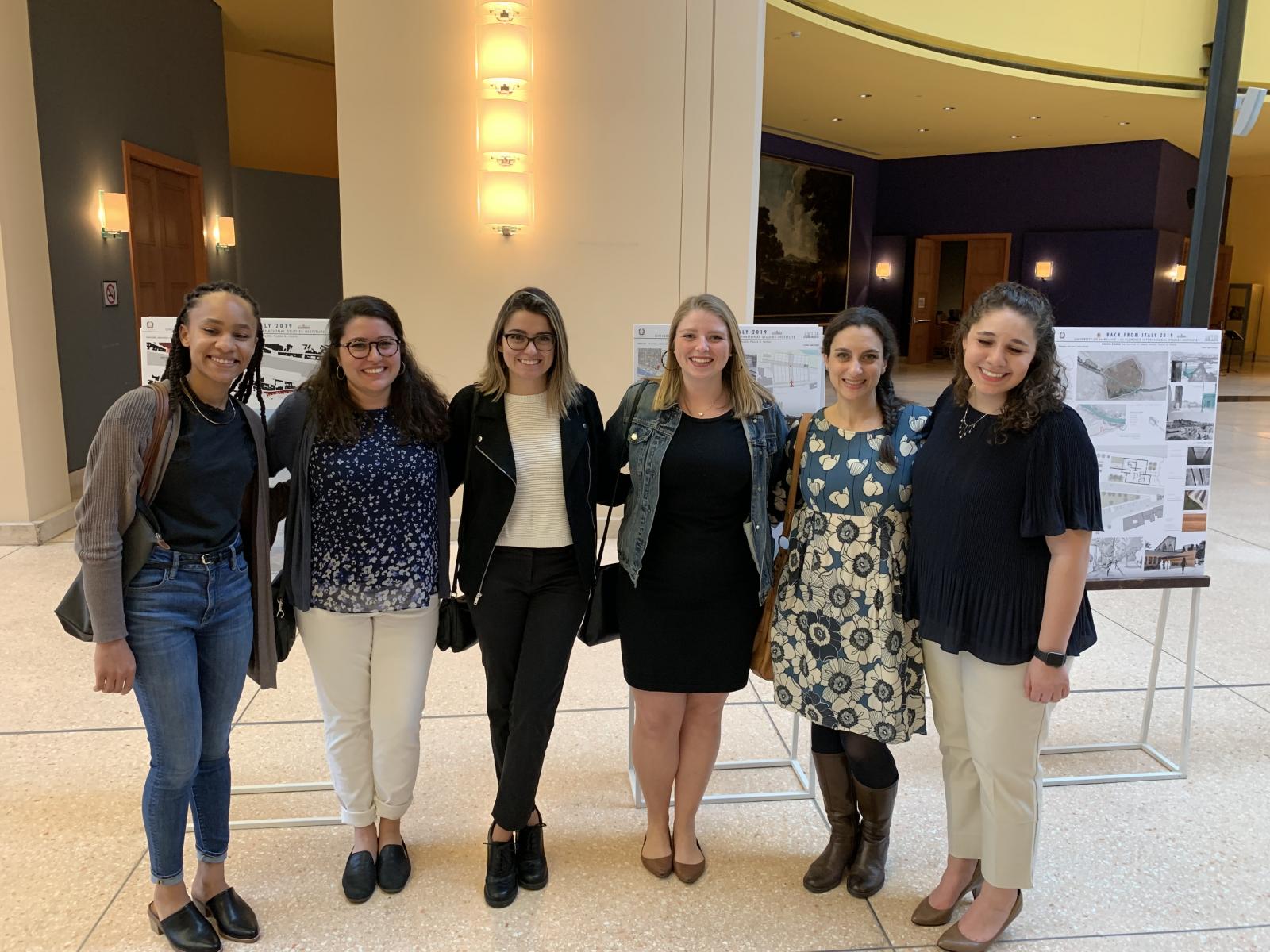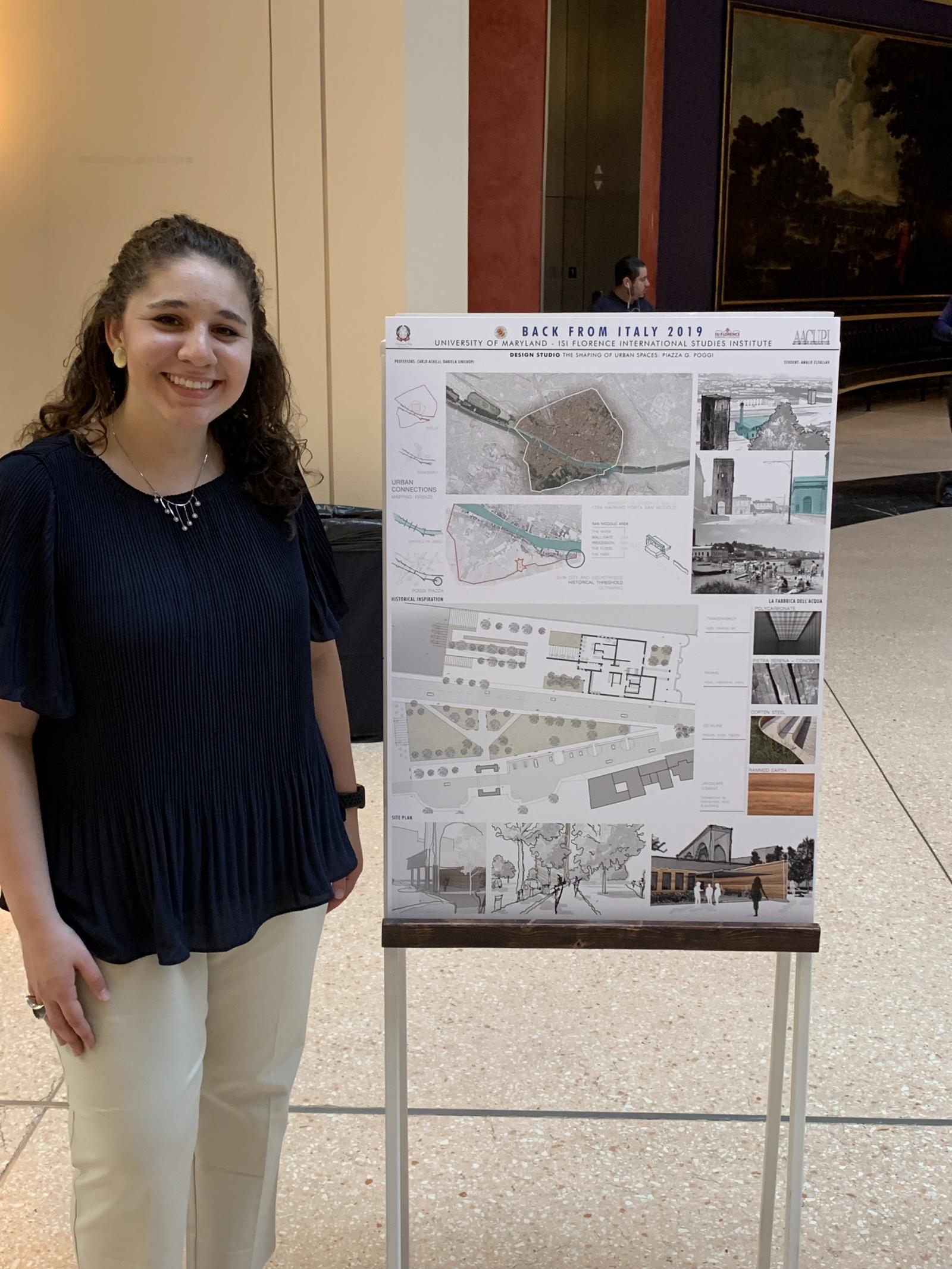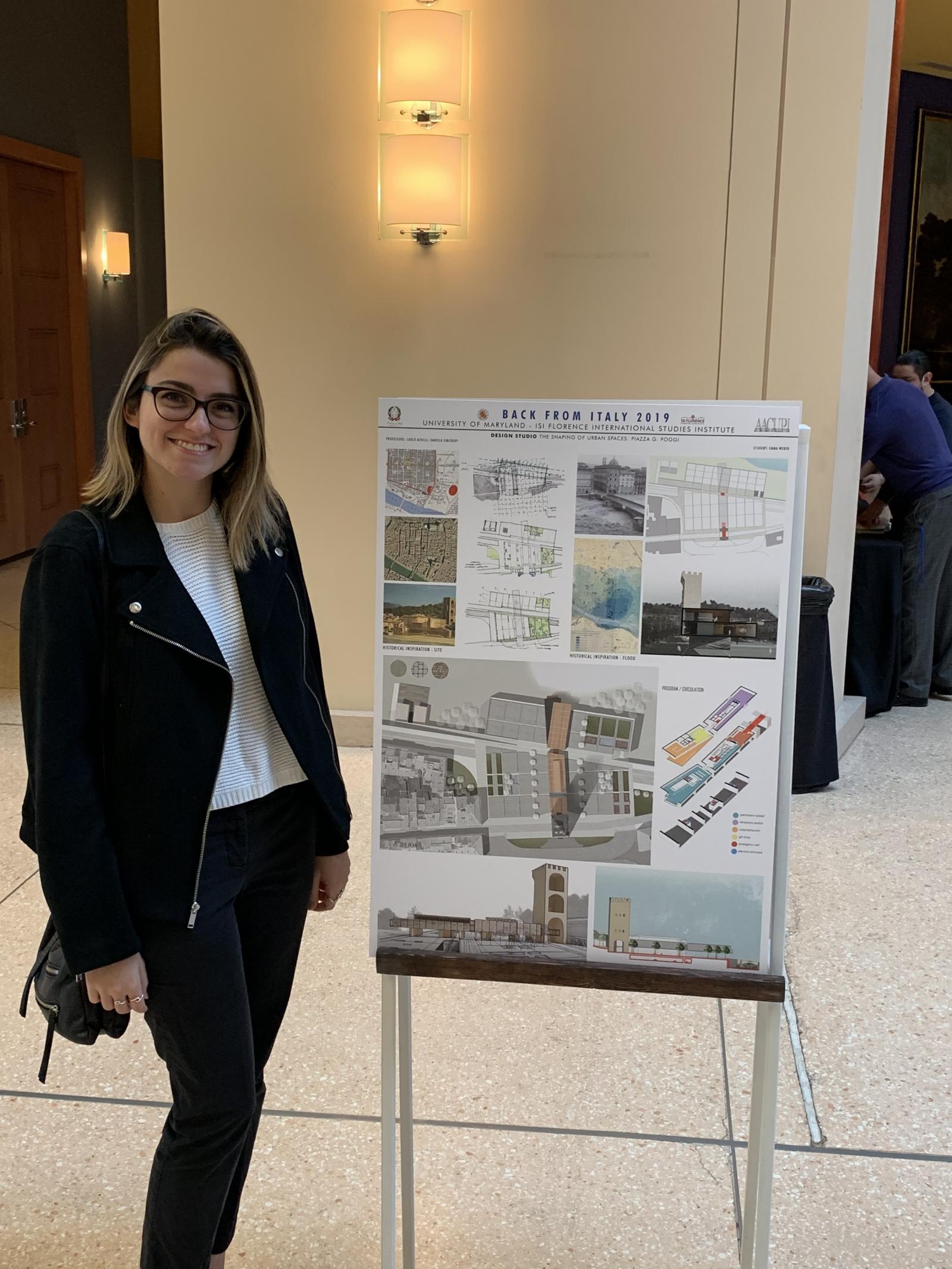Architecture Students Exhibit Work at Italian Embassy in Washington, D.C.
From March 28 to April 7, 2019, the Italian Embassy in Washington, D.C., hosted Back From Italy 2019, an exhibition of work by American architecture students who attended study abroad programs in Italy in the 2018 academic year.
Each of the projects displayed was from an architecture studio—taught by International Studies Institute Florence (ISI) professors—that challenged students from the University of Maryland and Christopher Williams University to redesign Piazza Giuseppe Poggi, a mostly empty square in the center of Florence. Work from 13 other American Universities and one Canadian university was also displayed.
Amalie ElFallah, Ana Maria Nicolich and Emma Webber, who attended the opening from UMD, redesigned the piazza to be more pedestrian-friendly and include a museum dedicated to the historic flood of the city in 1966.
Organized by the Association of American College and University Programs in Italy, the exhibition was structured to allow Italian and American visitors to see how studying in Italy has influenced students’ work. The ISI professors who instructed the studio, Carlo Achilli and Daniela Sinicropi, were also in attendance and shared with the audience their reflections on the role of architecture in international education.
Nicolich sat on a student and faculty panel where she answered questions about her cultural and academic experience studying abroad in Italy, a country “with so much to offer,” she said. “A consensus between all of us was that we wouldn’t have been able to design the same way if we hadn’t been there.” She continued, “Being in a place where we can design in the area that we’re actually living in helped put things in perspective. So, it wasn’t designing in a vacuum but rather for people that were there who we could interact with.”
After the exhibit concluded at the embassy, it traveled to Italy, where it will be shown in universities around the country.



